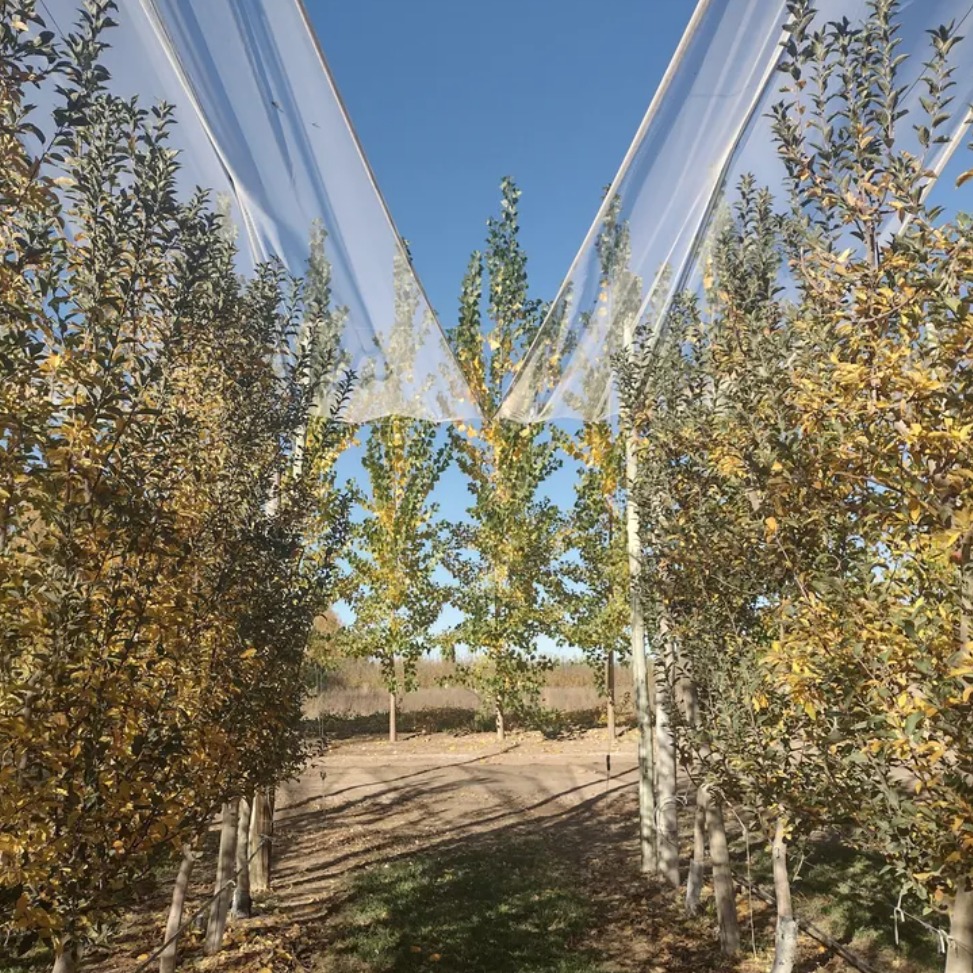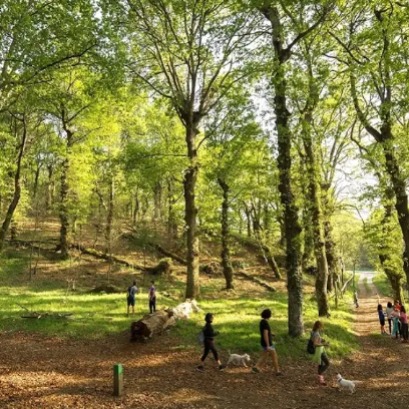
ABC of the Alamedas: What function do they fulfill in the farm of the Alto Valle?
The landscape of the Alto Productive Valley has as characteristic the beautiful Alamedas that border the boundaries of the farms, in addition to different species of willows, what function do they fulfill? We tell you in this note. Patagonia in general is characterized by being a region of strong winds, which can exceed 120 km per hour. These air currents can greatly affect the crops and the area of ??Alto Valle is no stranger to this situation.
In the farms of Río Negro and Neuquén, certain types of trees are usually used to assemble the so -called ?breaking curtains?, which have the main function of protecting the crops that could be seriously affected by the strong winding gusts. Particularly the poplar ( Populus SSP.), It is one of the species chosen in the valleys of Patagonia Norte to mitigate the winds. They are rapid growing trees and can have a height up to 30 meters long and an important diameter of the trunk. By their part, certain types of willows (Salix SSP.), Also have important functions in the farms. In addition to that they are trees that provide large areas of shadow, they are also used in the curtains. They are established in the farms to protect the crops. ? Characteristic winds in the region, ?says the engineer of the INTA. The rows of trees are talked when they have already fulfilled their function as curtains against the winds, adds Esteban Thomas. For this type of use, the engineer ensures that there are different clones of poplar and willow for the implementation of the breaking curtains. While before Creole or Chilean blades were used ?which are usually used, but to a lesser extent.? As for the species of these trees that are used, Ing. Thomas describes that ?for a few decades, and from the results of the results of regional essays, it is currently recommended to implement the blanc blanc de Garonne and Ragonese 22 INTA. These two clones of poplar are masculine, so they do not produce fluff, and develop a fairly narrow glass, ideal to achieve a semipermeable porosity of the curtains. The varieties of willows that are recommended for these uses are the sauces Arroyos and Tehuelche, with a moderately narrow cup, which adapt to mild or moderately saline soils. ?The certain is that scientific advances enabled the fact that? several of these clones of poplars and willows currently recommended were obtained through genetic improvement projects In different experimental units of INTA (INTA Delta del Paraná and INTA Castelar) ?argues the forest engineer. Another of the benefits that these rows of trees have to do with the care of the environment. These tree species, due to the high growth rate, kidnap a significant amount of carbon dioxide (CO2) that accumulates in the trunk, branches and roots for several years. The carbon kidnapping of the breaking curtains breaks, Formed by these trees, it compensates for an important proportion of the emissions generated by the inputs used in the production of crops, such as fuels, fertilizers and electricity, among others. What care should the breaking curtains have? Sauces are trees that need good water availability on the ground to grow. The breaking curtains are normally established in parallel to the irrigation ditches, so they have adequate moisture in the soil for their growth, confirms the expert. The engineer Thomas adds that the curtains of these species usually have between 20 and 25 years of age, although it is currently recommended to harvest at 10-12 years in order to reduce the negative effect generated by the shadow on crops. From the INTA Guerrico Experimental Station, training with the aim of providing Information on the importance of the breaking curtains for the protection of crops in the region of the Valleys of Patagonia Norte. On the other hand, they also inform the attendees of the new clones of Álamos and Sauces evaluated and currently recommended, in addition to exposing the Curtain carbon kidnapping estimates, for the carbon footprint of fruit production.
IT MAY INTEREST YOU
 Batev 2025 began: the meeting point for the construction industry
Batev 2025 began: the meeting point for the construction industry
The 30th edition of the International Exhibition of Construction and Housing has been inaugurated today, consolidating as the main event for innovation, industrialized construction, sustainability and technology in the regions construction sector. The exhibition will be open until June 28, 2025, from 2:00 p.m. to 8:00 p.m., in La Rural.
 This is the Galician forest where the highest chestnuts in Europe grow
This is the Galician forest where the highest chestnuts in Europe grow
The place has centenary chestnut trees that reach 30 meters high and keeps in its shadows the memory of Emilia Pardo Bazán
 A study analyzed the impact of forest fire smoke on cardiovascular health
A study analyzed the impact of forest fire smoke on cardiovascular health
The investigation was based on data from more than 20 million people and showed the consequences of exposure to fine particles in these events according to the United Nations Organization (UN), forest fires are rapidly increasing in intensity, frequency and duration due to the climate crisis





















